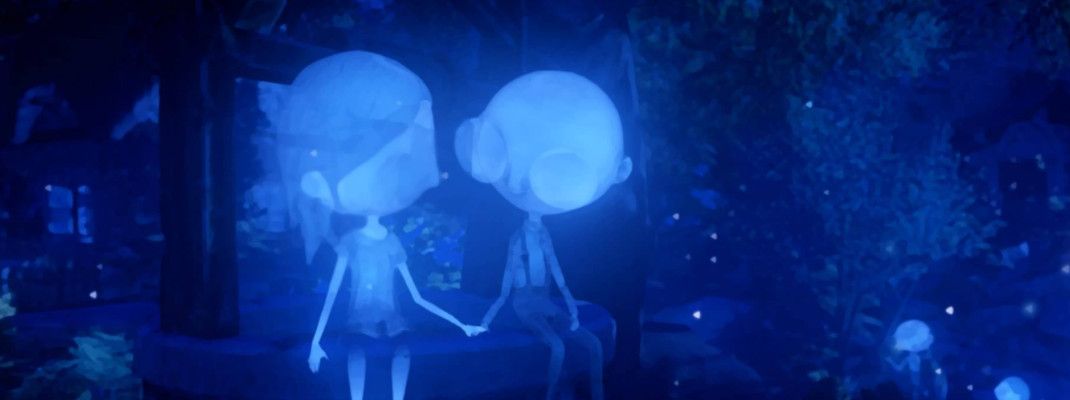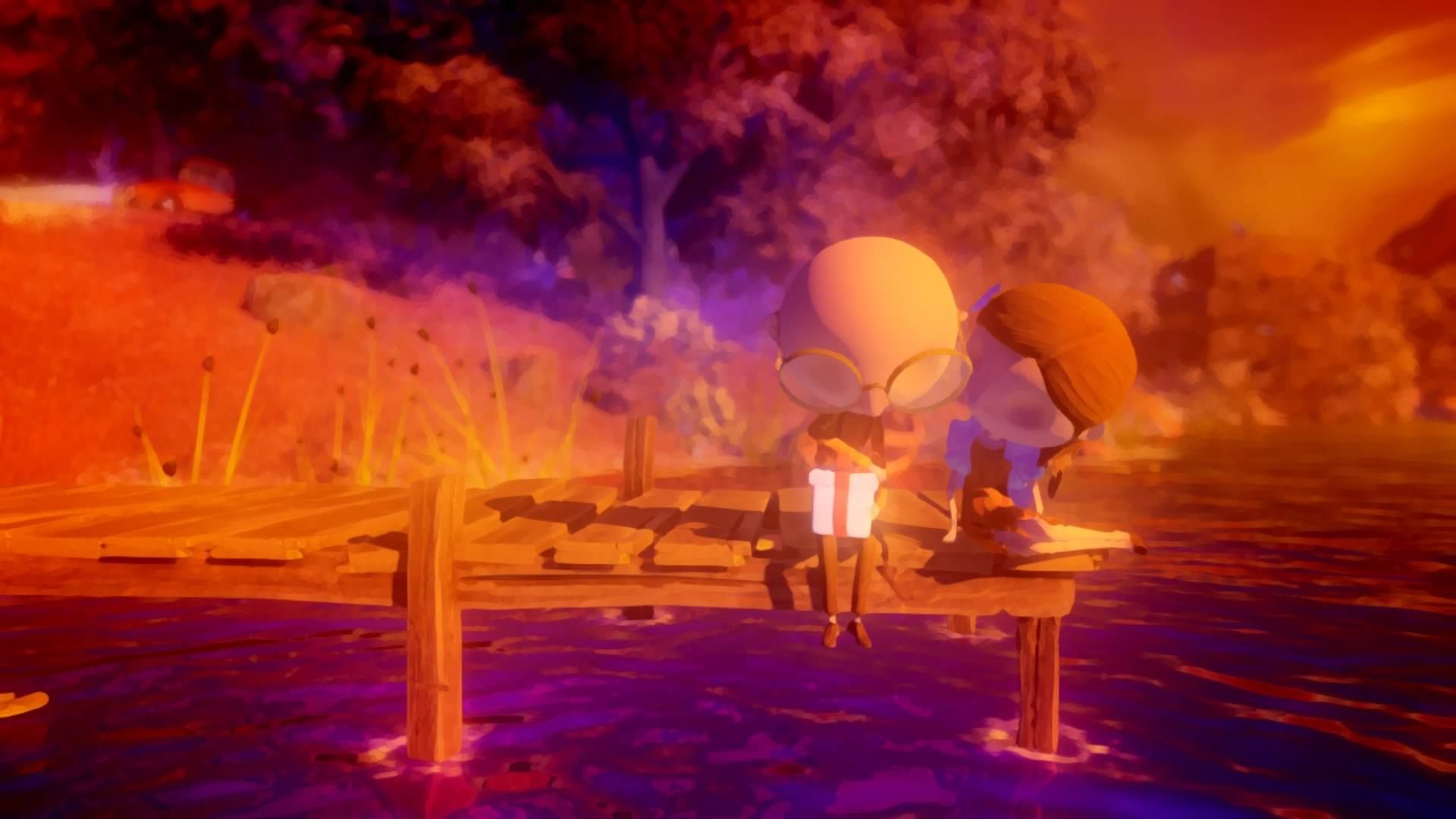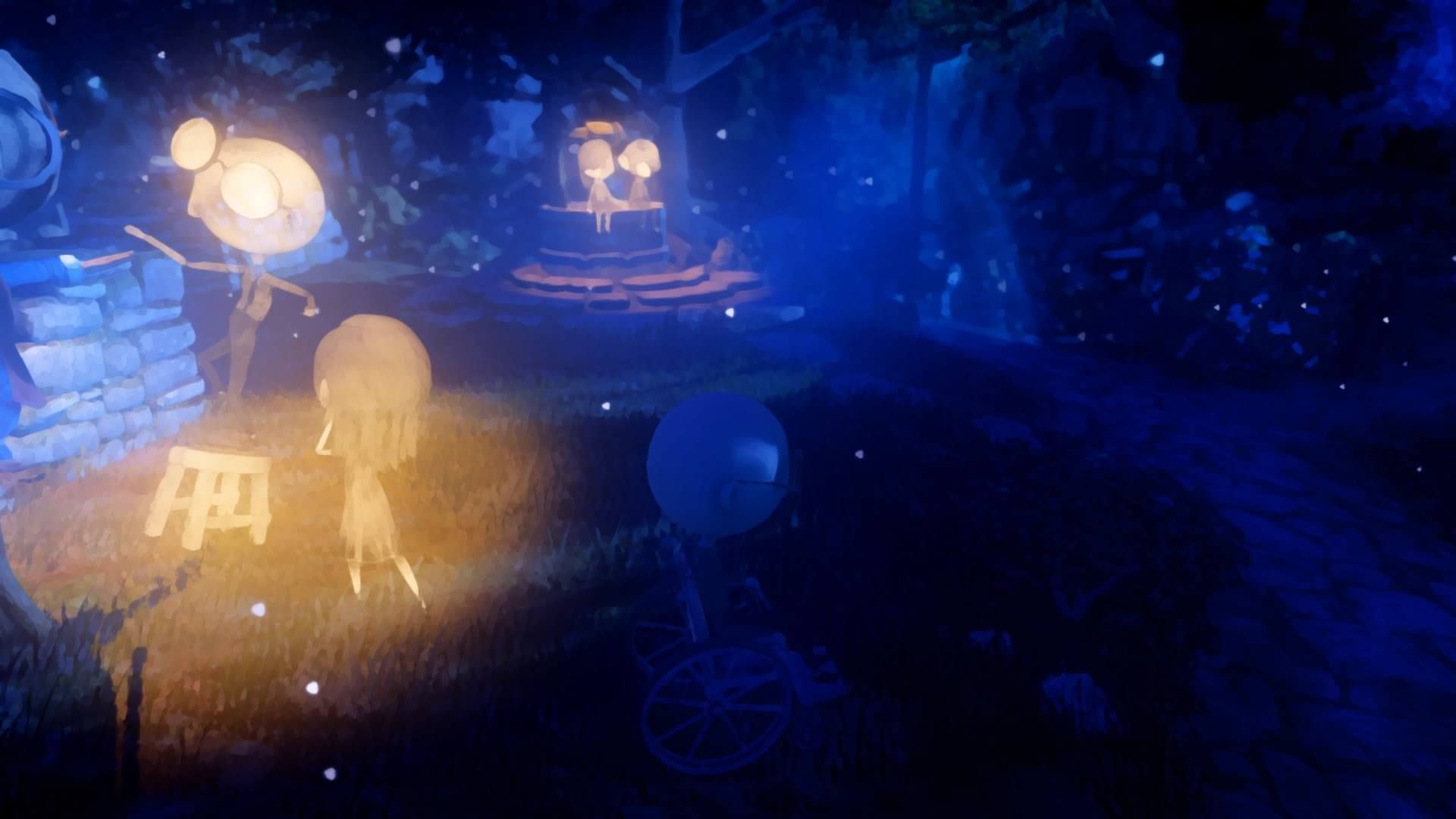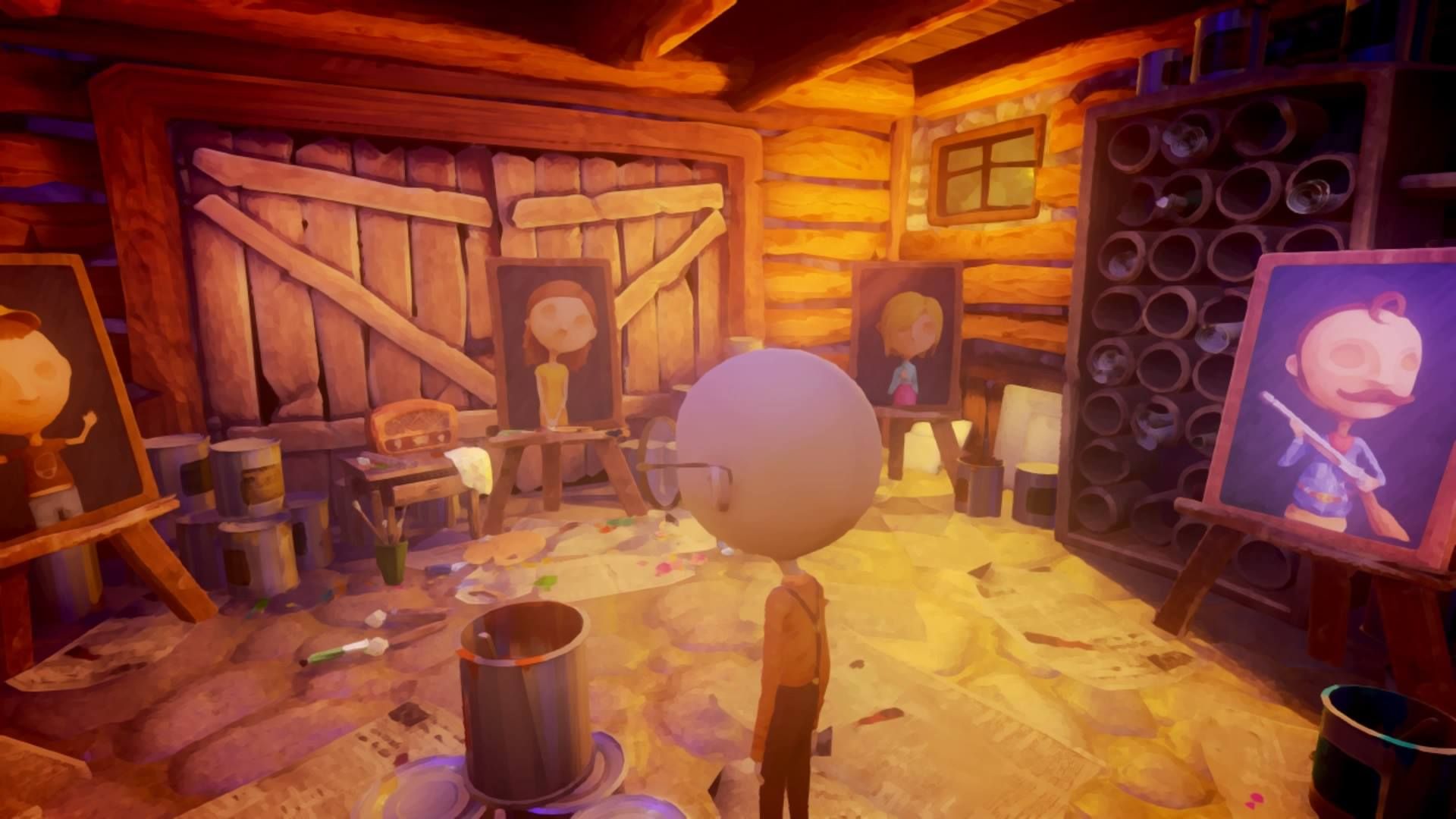Some of us are fortunate enough to form a strong enough bond with another person where the two become so entwined it is hard to imagine them as separate entities. These two individuals mean more than anything else to each other, and simply being in each other's presence is enough to make the world right regardless of whatever else might be going wrong. Sometimes tragedy removes one of these people from the world too soon, and the survivor never fully heals no matter how much time separates them from the incident. Nothing can fill the crevice inside their soul their departed partner left behind. They would give anything to be able to go back in time to prevent this from happening. This is how we meet Carl, a man who broken and alone after losing a significant part of himself.
This is the premise of Last Day of June, an emotional journey inspired by the Steven Wilson music video Drive Home. Things begin well enough with the couple spending an afternoon alone in a secluded spot by a lake. Going back to earlier in the day we see that June has a gift for Carl and is trying to figure out the perfect place to give it to him, and viewing one of her paintings of a lighthouse by a lake gives her the idea of where that perfect place may be. The two are relaxing on a pier and as Carl is about to open it a storm comes, forcing the two to walk to the car for shelter. The scene cuts to Carl sleeping on a chair in the middle of a having a nightmare. He gets up and looks over to June's empty before pulling himself into his wheelchair. He's hungry, but the fridge is empty. There is some canned food on a shelf, but reaching one of the cans is difficult without use of his legs, and once he gets it down his weakened state does not allow easy access to the food inside. Faint echoes of laughter are heard behind closed doors, but they soon fade away reminding him of how small his world has become.
In a quest for the elusive can opener, Carl forces himself to open the room filled with June's paintings, something he probably hasn't done in quite some time. While searching this crucial artifact, he can examine the paintings and trigger memories, the first one from a picture of June being particularly painful. As his irritation over a soccer ball festers and grows into anger (it makes sense in context; believe us, believe us.) the other paintings light up and visual memories of life with June flood into the surrounding area.
Interacting with the portraits of other characters transports us to before the accident. No longer is the player in control of Carl, but now has stepped into the shoes of another character. Focusing on this new character will retrace the events of the fateful day, but from the perspective of another person. Wandering around as the kid with the cap and soccer ball somehow relates to the tragedy, but this is where Carl starts to have new wheels turn in his head about how reliving these memories could lead to somehow altering the events, which could bring his beloved June back to him.
This begins our descent into Groundhog Day territory, where reliving the tragedy of June's death becomes something of a regular occurrence. During these days as another character it is up to the player to figure out what needs to happen differently to lead to a different result. These days are short, which is good because they will likely be replayed several times in order to do what is required.
The gameplay is fairly simple and none of the puzzles are that difficult, though mechanics can be somewhat frustrating at times. What needs to be done in a certain scenario can be clear, but making that actually happen can feel like a chore because of how the game design forces the player to redo previously played character stories several times in order to get the right combination of events to bring about the desired change. This serves as a double edged sword to the narrative of Last Day of June. On hand it illustrates the complexity of how all the characters are interconnected, creating a small community that is greater than just Carl and June, and we end up getting a good insight in how these characters relate to each other. On the other hand, it can become tedious and break the level of immersion, as well as desensitizing the player to the death of June, which is heart wrenching the first couple times but loses impact after repeated viewings. In viewing other characters' days a sense of repetition sets in quickly and going through them to try to change the past doesn't offer up enough gameplay variety to keep playing interesting.
Last Day of June may not have the strongest mechanics, but does make up for it in other areas. The visuals are stylized and have a washed out watercolor like effect to them, and after watching the music video that inspired it, there's no denying the influence. The use of Steven Wilson's music perfectly compliments the morose atmosphere of the story and appearance, which leads to an experience that is beautiful in sound and imagery. The story is told with no dialog and this unconventional approach is effective in conveying the sense of community between characters and the emotions that should accompany the story.
Closing Comments:
Last Day of June is a beautiful presentation of a heart-wrenching tale that is hindered by less-than-stellar game mechanics. It should be noted Last Day of June was partially designed to appeal to people who don't regularly play video games. It succeeds as a story and as an interactive work of art, but as a game there are some mechanics that could have benefited from some further tweaking. As unique as this title is, however, it allows it to be one of the rare exceptions to the rule that mediocre gameplay trumps excellence in areas like graphics and sound. The story and concept are compelling enough where playing Last Day of June is worthwhile despite its shortcomings. Depending on the player, it can take four to six hours to complete. It's not something that will appeal to everyone, but it's worth looking into for those willing to forgive lackluster gameplay for a compelling story with a unique presentation.




